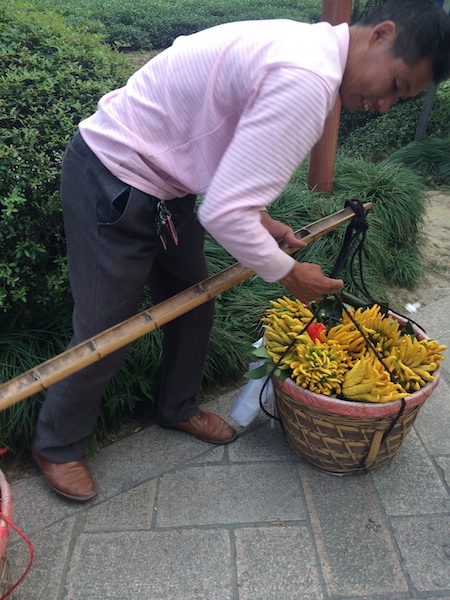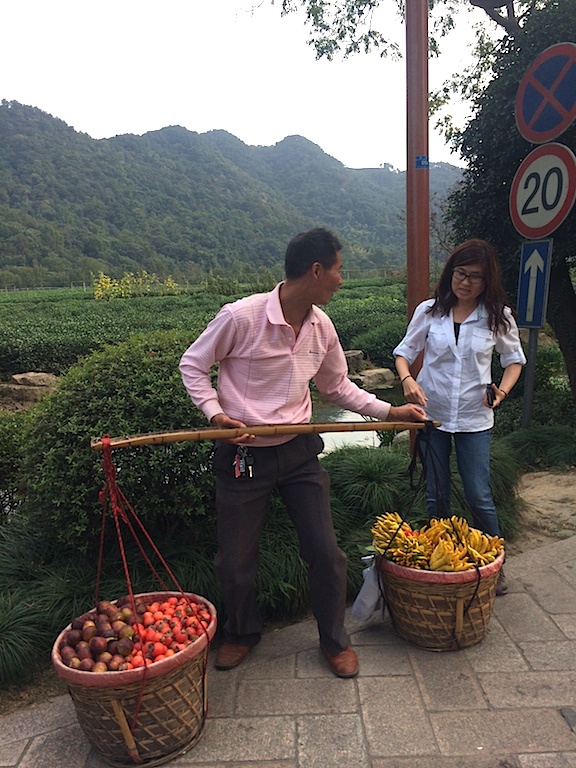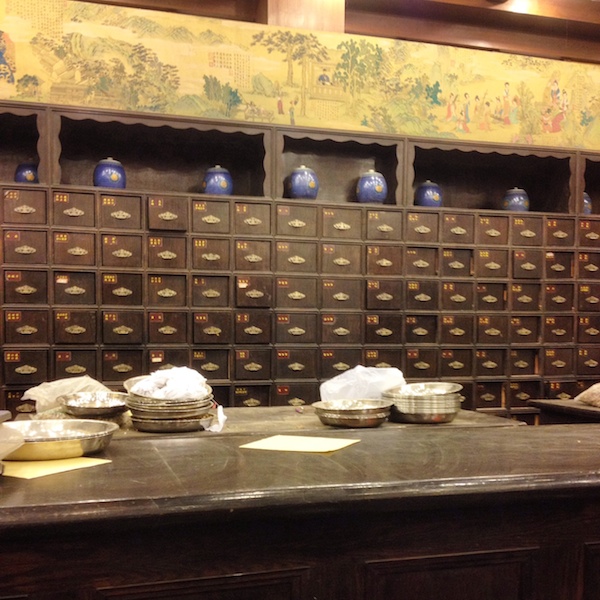
Fall season means the abundance of fo shou (Buddha's hand) and figs or wu hua kuo in Hangzhou. Prior to visiting Hangzhou I'd never heard or seen fo shou. I was so happy when I saw a vendor carrying two baskets of colorful fruits with a milkmaid's yoke (bamboo carrying pole) at The Tea Museum in Hangzhou. What I didn't know was the yellow fruits I thought were bananas from afar were actually fo shou.

He had fo shou of all sizes. The fruit is native to northern China. Used for decoration, as a preserved fruit and also as an important dried ingredient in Chinese traditional medicine. They ripen in the fall and most are being sliced thinly and sun-dried. According to Traditional Chinese Medicine, fo shou is good for heart and digestive systems.
Wu Hua or fig is also used for Chinese traditional medicine. This vendor was selling figs for 15 Yuan per half kilo. Just to support him I bought 5 Yuan worth of figs and had the honor of taking a few photos and chatting with him. Take a look at how fascinated I was with his shoes, shirt and pants. I've not seen a vendor dressed so well like him in China. The street vendors are usually in simple shirts which sometimes is accompanied by dirty shoes and pants. Most of all I was fascinated with the bamboo carrying pole. He offered me to try carrying them but I declined.

Each basket has a lid with display of fruits on them. Inside the baskets are more fruits and plastic bags. His counterpart had similar fruits but without the beautiful baskets and bamboo carrying pole.
Fo Shou and Wu Hua are both ingredients for Traditional Chinese Medicine. Hangzhou has plenty of both. Historically, Hangzhou is famous for its Traditional Chinese Medicine (TCM) shops and a Museum of Traditional Chinese Medicine known as Hu Qing Yu Tang Museum. A TCM shop looks like a science lab, a museum and a library. Here is one in Hangzhou:

Leave a Reply
You must be logged in to post a comment.